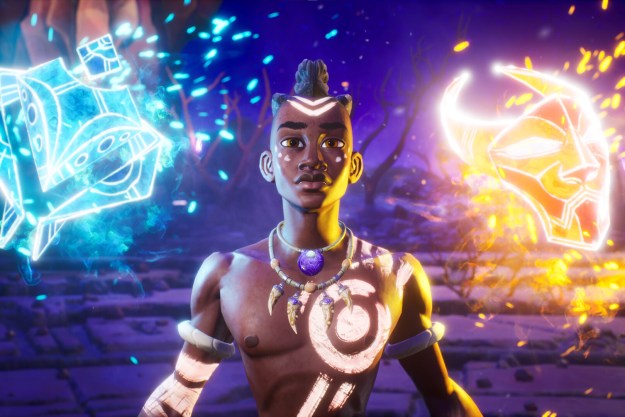If you want to record or stream your Nintendo Switch gameplay, you need a capture card. Unlike the Xbox Series X and PlayStation 5, Nintendo’s hybrid console can’t record gameplay internally or broadcast it to Twitch, YouTube, or Facebook (outside of 30-second clips). The best capture cards for Nintendo Switch get past that issue, allowing you to broadcast your favorite Switch games.
- The best capture cards for Nintendo Switch at a glance
- The best capture card for Nintendo Switch: Elgato HD60 S
- The best portable capture card for Nintendo Switch: AVerMedia Live Gamer Portable 2
- The best budget capture card for Nintendo Switch: AVerMedia Live Gamer Mini
- The best USB-C capture card for Nintendo Switch: EVGA XR1
- The best capture card for the Nintendo Switch “Pro”: Elgato HD60 S+
- Frequently asked questions
We’ve rounded up five capture cards that do the trick for Switch. We recommend the Elgato HD60 S most, though. It’s an inexpensive capture card that can capture the full fidelity of the Switch, and it’s dead simple to use.
See more
- How to livestream on Nintendo Switch
- How to record and share gameplay clips on Nintendo Switch
- Best Nintendo Switch accessories
The best capture cards for Nintendo Switch at a glance
- The best capture card for Nintendo Switch: Elgato HD60 S
- The best portable capture card for Nintendo Switch: AverMedia Live Gamer Portable 2
- The best budget capture card for Nintendo Switch: AverMedia Live Gamer Mini
- The best USB-C capture card for Nintendo Switch: EVGA XR1
- The best capture card for Nintendo Switch “Pro”: Elgato HD60 S+
The best capture card for Nintendo Switch: Elgato HD60 S
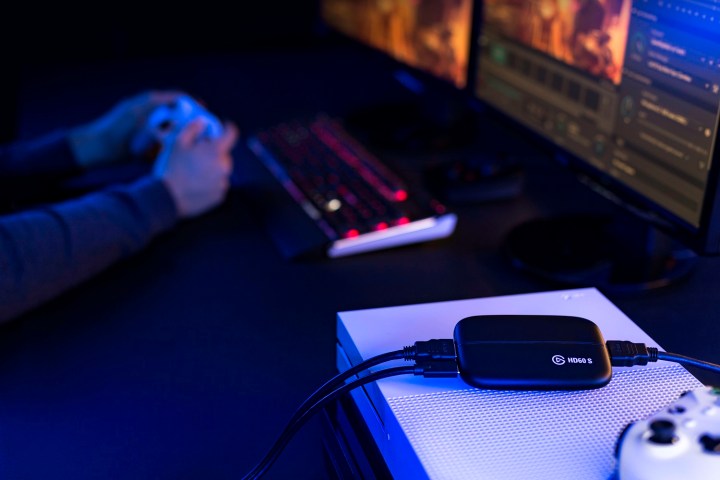
Elgato is the go-to brand for all things streaming, and the HD60 S is a big reason why. It’s a reasonably priced capture card that gets the essentials right, and it includes a few unique features. For streaming or recording, the HD60 S supports 1080p at up to 60 fps with the same resolution and frame rate via the passthrough. It doesn’t support
Along with the capture card, Elgato includes a suite of software tools. That includes flashback recording so you can retroactively record a gameplay clip and Instant Gameview, which allows you to see a copy of your stream lag-free in Elgato’s broadcasting software. The HD60 S doesn’t have any recording limits, either, so you can continue to play until you run out of storage space.
We rate the HD60 S as the best capture card for Nintendo Switch on the back of its features, price, and ease of use. It also earns our top spot due to its low system requirements. On Windows, you can get by with a quad-core Intel Core i5 or better with either Intel HD or GTX 600-series graphics (or better). Mac users also need a quad-core i5 or better, paired with AMD or Nvidia graphics.
The best portable capture card for Nintendo Switch: AVerMedia Live Gamer Portable 2
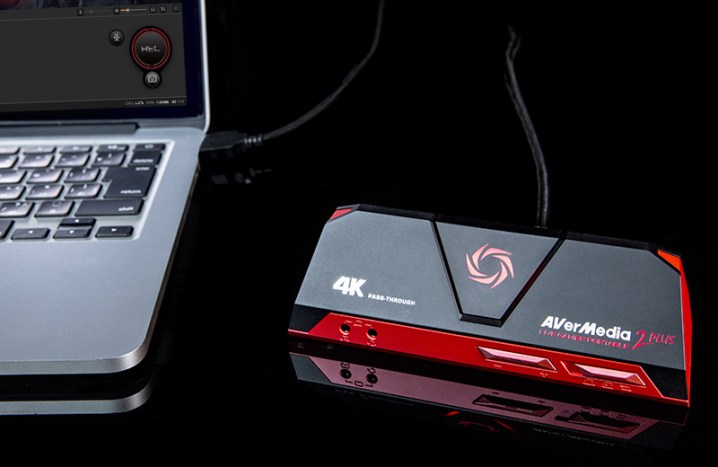
AverMedia’s Live Gamer Portable 2 is one of the most flexible capture cards on the market, and it’s cheap. For specs, it supports 1080p passthrough at 60 fps while recording at the same resolution and frame rate. You don’t need a computer to record, either. The Live Gamer Portable 2 includes an SD card reader, so you can record your gameplay independently of a computer. There are also inputs for a microphone and headset so you can provide commentary on the go.
As a portable capture card, the Live Gamer Portable 2 is a perfect compliment to the Switch. A switch on the front of the capture card allows you to easily toggle between PC and PC-free recording modes, and if you’re not recording or streaming, you can use the capture card as an SD card reader.
You can use the Live Gamer Portable 2 with any broadcasting software you want, but AverMedia includes its own RECentral. It’s not quite as flexible as OBS, but RECentral includes features like one-click sharing to social media and live clip editing.
You don’t need a beefy computer or really a computer at all to record with the Live Gamer Portable 2. If you’re streaming, AverMedia recommends a third-gen Intel Core i5 with a GTX 650 or better and 4GB of RAM for Windows users. For Mac, you should have a quad-core i5 with a GT 750M or better.
The best budget capture card for Nintendo Switch: AVerMedia Live Gamer Mini
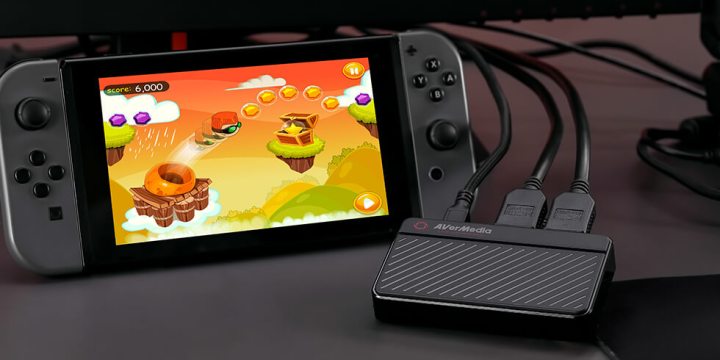
The AverMedia Live Gamer Mini is a small capture card that packs more features than its price suggests. For the Switch, it has everything you need. The Live Gamer Mini can capture a 1080p stream at up to 60 fps, and it provides the same resolution and frame rate in the passthrough. For around $100, those specs aren’t bad. That said, the Live Gamer Mini stands out for another reason: A built-in hardware encoder.
That means you can record gameplay without putting any load on your CPU. The included StreamEngine software (only available on Windows) allows you to record a copy of your gameplay directly to storage while using streaming software like XSplit or OBS. You can record your stream without any CPU overhead, or you can record gameplay on an older laptop without worrying about CPU load. Outside of StreamEngine, the Live Gamer Mini also comes with RECentral, allowing you to easily stream to Twitch, YouTube, Facebook, and more.
With the hardware encoder, you can get by with a less powerful computer. AverMedia recommends a third-gen Intel Core i5 with a GTX 650 or better and 4GB of
The best USB-C capture card for Nintendo Switch: EVGA XR1

The EVGA XR1 is a fairly new capture card, released by one of the biggest names in PC gaming. It shouldn’t be a surprise, then, to see that the XR1 is all about delivering the best video and audio quality. The XR1 includes a
That convenience is what makes the EVGA XR1 stand out, and it shows up in other places. The card comes with an audio mixer knob on board, for example, and you can customize the ARGB lights surrounding it to show your mic volume, stream volume, and more, all without touching any software. Additionally, the XR1 is certified for OBS and doesn’t require a driver. Simply hook everything up, and you’re good to go. It’s worth noting that although the XR1 is certified for OBS, you can use it with XSplit, Streamlabs OBS, or any other broadcasting software.
The USB-C cable connects the XR1 to your computer, which is great for
Although the XR1 released to mixed reviews due to its limited specs and high price, it has seen multiple discounts since launch. You can find it for around $130, which is much more reasonable than its $190 MSRP.
The best capture card for the Nintendo Switch “Pro”: Elgato HD60 S+
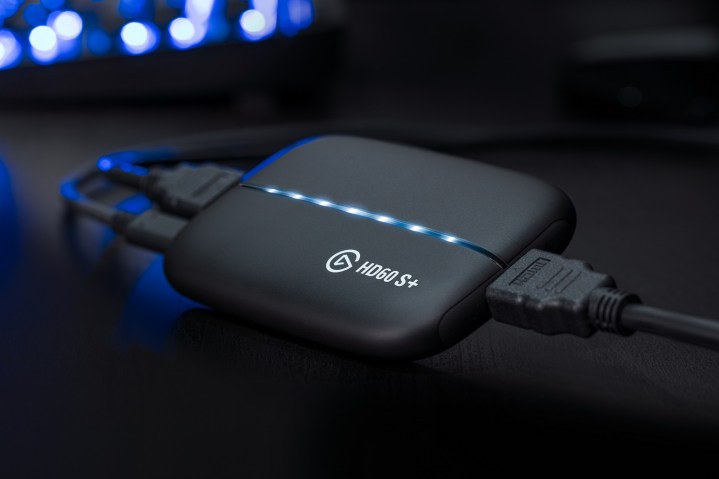
The Nintendo Switch Pro — or whatever Nintendo ends up calling it — isn’t here yet, and Nintendo hasn’t officially announced it. Reports suggest that it’s releasing shortly, though. Compared to the normal Nintendo Switch, the big deal with the mid-gen update is rumored
Assuming the updated model can output 4K, the Elgato HD60 S+ is perfect. It provides 4K HDR passthrough at 60 fps, allowing you to enjoy the full resolution and frame rate of your game lag-free. You can capture up to 4K gameplay at 30 fps or downscale to 1080p for 60 fps recording. The HD60 S+ supports 10-bit HDR passthrough and capture, too, if you want to use it with a device that supports HDR gameplay.
You don’t need a tricked-out computer for the HD60 S+, either. On Windows, you need a sixth-gen Intel Core i5 or better, 4GB of
Frequently asked questions
How do you pick a capture card for the Nintendo Switch?
Most capture cards are built for Xbox and PlayStation consoles, which have a higher resolution and frame rate compared to the Switch. Because of that, you don’t need to worry too much about specs when choosing a Nintendo Switch capture card. After verifying 1080p recording at 60 fps, pay attention to things like SD card recording, bundled software, and minimum system specifications.
You want to steer clear of capture devices posing as capture cards. You can find simple dongles for around $20 with an HDMI input on one end and USB connector on the other. These devices allow you to connect your Switch as an input source, but they don’t let you see your gameplay. A proper capture card includes a passthrough to your screen so you can play your games normally while taking a copy of that video stream for recording or streaming.
How do you use a capture card with your Nintendo Switch?
You can use a capture card with your Nintendo Switch like you would with any other console. Dock your Switch and plug in the power, but instead of connecting the HDMI cable to your TV, connect it to the input of your capture card. Take a second HDMI cable from the output of your capture card to your TV. Finally, use the USB port on the capture card to connect it to a computer.
On your computer, install the capture card’s included software and download a recording/streaming application. Multiple applications are available, but we recommend OBS, XSplit, or StreamLabs OBS. XSplit and StreamLabs are the best for beginners, while OBS is more flexible for power users.
Turn your console on and boot up your streaming software, and you should see your capture card as a video source. Add it, plus a webcam or any other elements you want on your stream, and you’re all set.
Is it worth it to buy a capture card for the Nintendo Switch?
Yes, a Nintendo Switch capture card is worth it. Unlike the
That doesn’t mean it needs to cost you a lot of money. The Switch isn’t very powerful, so you don’t need to worry too much about resolution and frame rate like you do with
Editors' Recommendations
- The best cozy games
- Nintendo Indie World 2024: How to watch and what to expect
- The best games on Netflix Games
- Best Nintendo Switch deals: consoles, games, and accessories
- 10 best graphics cards of 2024: finding the best GPU for gaming


